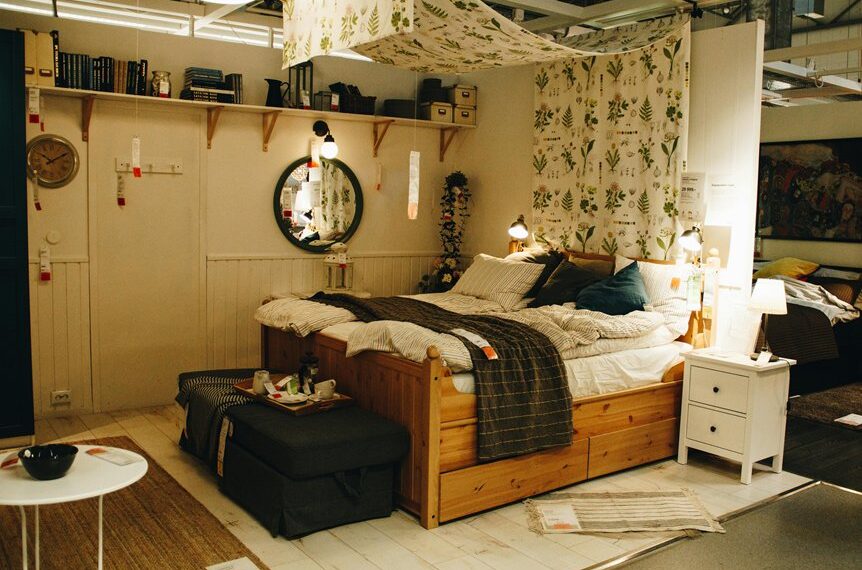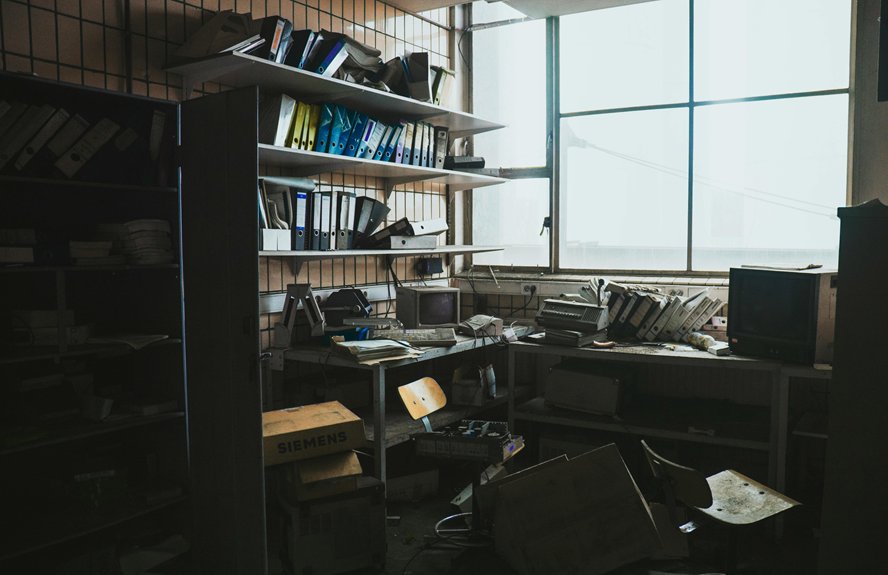When building a steel and wood bookshelf, start with square tubing or angle iron for a sturdy frame that can support 30-40 pounds per shelf foot. Choose complementary woods like oak or walnut, and space shelves 10-12 inches apart for standard books. You'll want at least 12 inches of depth, proper mounting hardware, and rust-resistant coating for the steel. Consider adjustable shelf pins for flexibility, and don't forget to seal your wood. These basics set the foundation for countless design possibilities.
Selecting the Right Steel Profile for Your Frame
When you're building custom bookshelves, choosing the right steel profile for your frame makes all the difference in both strength and style. Start by looking at different steel grade selections – the most common ones work great for basic shelving.
Your steel fabrication techniques matter too. Square tubing offers clean lines, while angle iron gives a more industrial look that's perfect for modern designs.
Choosing Wood Species That Complement Industrial Design
Several wood species pair beautifully with industrial steel frames, making your bookshelf truly stand out. Oak and walnut bring rich natural wood grains that contrast nicely with metal.
Pine offers a lighter, casual look that's perfect for modern spaces. You'll find maple's clean appearance works great for unique furniture shapes, while reclaimed wood adds character and sustainability to your industrial design.
Determining Optimal Shelf Depth and Spacing
Beyond selecting the perfect wood species, proper shelf measurements make the difference between a beautiful bookshelf and one that's truly functional.
For optimal shelf spacing, you'll want to leave 10-12 inches between shelves to accommodate standard books. Your shelf arrangement should include varied heights, and you'll need at least 12 inches of depth to properly support larger volumes.
Balancing Weight Distribution and Support
The proper distribution of weight stands as a critical factor in building sturdy bookshelves that'll last for years. To maintain shelf stability, you'll want to spread your heavier books across multiple shelves rather than clustering them in one spot. This helps preserve structural integrity and prevents sagging.
Make sure you've got solid support beneath each shelf, especially near the center where bending often occurs.
Planning the Perfect Finish for Steel Components
While proper structural support keeps your bookshelf standing strong, protecting steel components with the right finish will make it look great and last longer. You'll find various surface texture options like powder coating, matte, or glossy paint finishes to match your style.
Don't forget about corrosion protection measures – a good primer and rust-resistant coating will keep your steel shelves looking pristine for years.
Treatment and Sealing Methods for Wood Surfaces
Protecting raw wood surfaces ensures your bookshelf stays beautiful and durable for years to come. When applying protective finishes, start with a quality wood sealer followed by two coats of your chosen finish. You'll want to sand lightly between coats for the smoothest result.
For maintaining wood surfaces, use a soft cloth to dust regularly and reapply finish every few years.
Hardware Selection for Seamless Connection Points
Selecting proper hardware makes a world of difference in how your bookshelf comes together. You'll want to explore mounting hardware options like heavy-duty brackets, corner braces and threaded inserts for stability.
Don't skimp on reinforcement techniques – sturdy shelf pins and quality wood screws will keep your shelves from sagging under heavy books. Choose hardware that matches your shelf's style.
Calculating Load-Bearing Capacity per Shelf
How much weight can your shelves really handle? To figure out your shelf load capacity, you'll need to consider the shelf material, span length and support method.
For wood shelves, a good rule is 30-40 pounds per foot. Weight load considerations vary based on shelf thickness – a 3/4-inch board typically handles less weight than a 1-inch board.
Designing Adjustable vs. Fixed Shelf Systems
When deciding between adjustable and fixed shelving, you'll need to weigh flexibility against stability. Adjustable systems let you create modular shelf configurations as your book collection grows, while fixed shelves offer more rigidity.
You'll find custom sizing options in both types, but adjustable shelves give you freedom to change heights whenever needed. Just remember that movable parts may reduce overall sturdiness.
Incorporating Cable Management and Hidden Storage
Modern bookshelves need to handle more than just books – they're often home to electronics, charging stations, and media equipment too. You'll want to include wire management solutions like built-in channels and hidden compartments to keep cables tidy.
Look for shelving units with modular expansion capabilities that let you add storage boxes or drawers where needed for a clean, organized look.
Conclusion
You're now equipped to create stunning industrial-style bookshelves that blend steel and wood perfectly. Remember to focus on both form and function – your shelves need to look great while safely holding your books and collectibles. Don't be afraid to experiment with different designs and materials, but always double-check your measurements and weight calculations. With these tips in mind, you'll build shelving that's both beautiful and practical.














